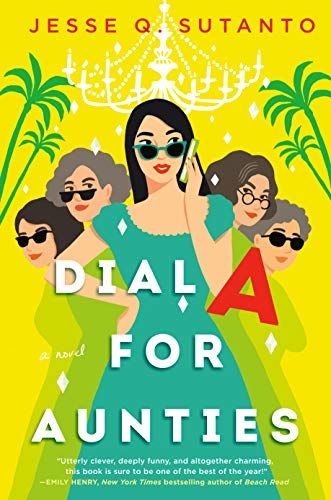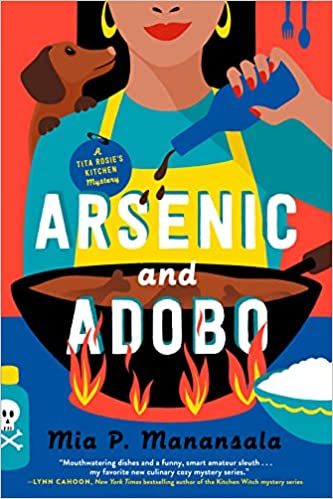
How Recent Cozy Mysteries By Authors Of Color Applaud Female Power
In the past five years, with the advent of a diverse cast of authors, cozy mysteries have started featuring many more strong female characters. These women cannot be intimidated by the status quo that preserves patriarchy. Keeping them from becoming who they want to be and reaching their fullest potential is out of question. This shift is important to note as there was once a time when mystery novels used women as plot devices to advance the growth of a singular (mostly white) male detective.
Jesse Q. Sutanto’s Dial A For Aunties is full of heart and sisterhood. Meddy Chan and her aunties are always looking out for each other. Meddy’s mom sets her up on a date which doesn’t go well, and in the end, Meddy accidentally kills her date in self-defense. This is when her mom and her aunties come to her aid to help dispose of the body. In her essay “Muteness Envy” from The Feminist Difference, Barbara Johnson talks about how women are always silent about two things: their pleasure and their violation. Our culture idealizes this silence as it bolsters a system that gaslights women into settling for the worst. Dial A For Aunties debunks once and for all the trope of the “helpless maiden” that society wants women to be. Meddy and her squad of strong women don’t tolerate the breach of boundaries, nor are they submitting to a society that strips women of their agency. The writing is hilarious and the plot is thoroughly entertaining, but for me what stands out the best about this book is the way it does justice to women’s narratives. Instead of portraying female characters as “battered” and “in need of a savior,” it makes its women deliver themselves out of darkness.
In Harini Nagendra’s novel, The Bangalore Detectives Club, we meet a saree-clad amateur detective about to take down the evils of her world. About a century ago, when casteism in India is the order of the day, Kaveri moves to Bangalore to be a proper wife to her doctor husband, Ramu. Kaveri’s new life is not a walk in the park, but she is still getting by. From the beginning, Kaveri subverts all expectations about how a woman should be. She is not scared to plunge into a murder mystery and help the cops hunt down the culprit. In a society where women are rarely allowed to venture out of the house by themselves and caste hierarchies are rigid, Kaveri traverses the city and denounces caste politics at every opportunity she gets. She doesn’t hesitate to head to the homes of those who have been pushed to the fringes by the prejudices of the upper caste. This book zooms in on how little agency women have in Kaveri’s India. Considering the sociopolitical landscape she is raised in, Kaveri is an anomaly. She is an exceptionally smart woman who learns to drive, doesn’t shy away from wearing swimsuits, and has a mathematical bent of mind. Kaveri is the mouthpiece of women who are often held back by an outdated cultural script. It’s a shame how she has to practice mathematics sneakily and endure judgment for visiting the house of a sex worker. However, as is the nature of brave, rebellious women, all the social obligations forced on her do little to deter her from becoming the detective she is meant to be.
Mia P. Manansala’s Arsenic and Adobo follows Lila Macapagal who is in a transitional phase of her life. She has had a terrible breakup and now she needs to recuperate in the comfort of her home. When she is still figuring out how to put her life back on track, her ex-boyfriend makes an appearance. This sets in motion a series of events that will ultimately lead to Lila discovering her own strength. When Lila is charged of being her ex’s murderer, she has no other option but to fight back. Being part of the Filipino diaspora, life isn’t easy for Lila and her family. Manansala has touched upon how Lila tries to stand tall against white men’s attempts to harm her and her loved ones. When race-centric violence is so rampant, a woman of color’s fight against cops bent on labeling her guilty has a much larger sociopolitical subtext. Depictions of brave women of color battling the system, as we see in Lila’s case, need to enter the cultural mainstream in order to give us models against which the rest of us can build our identities. Lila puts her everything into saving Tita Rosie’s restaurant and also clearing her own name in the process. While the theme of kinship is strong here, Lila’s own desire for finding her footing also comes to the fore. She doesn’t just owe it to her family but also to herself to seize the life they deserve and the life that she was always meant to live.
Cozy mysteries of the recent past look at women from a refreshing new lens. The heroines are not flawless super-beings or self-sacrificial martyrs. They stutter, they fall, yet they rise up again to take down everyone who undermines their strength. To explore more mysteries written from a feminist angle, please check out 15 Of The Best Feminist Mystery Novels.












